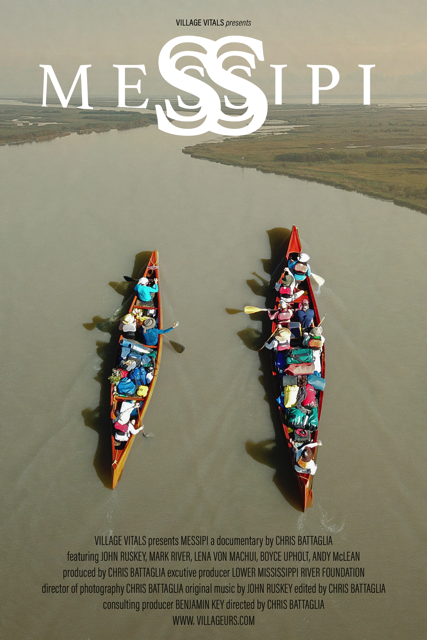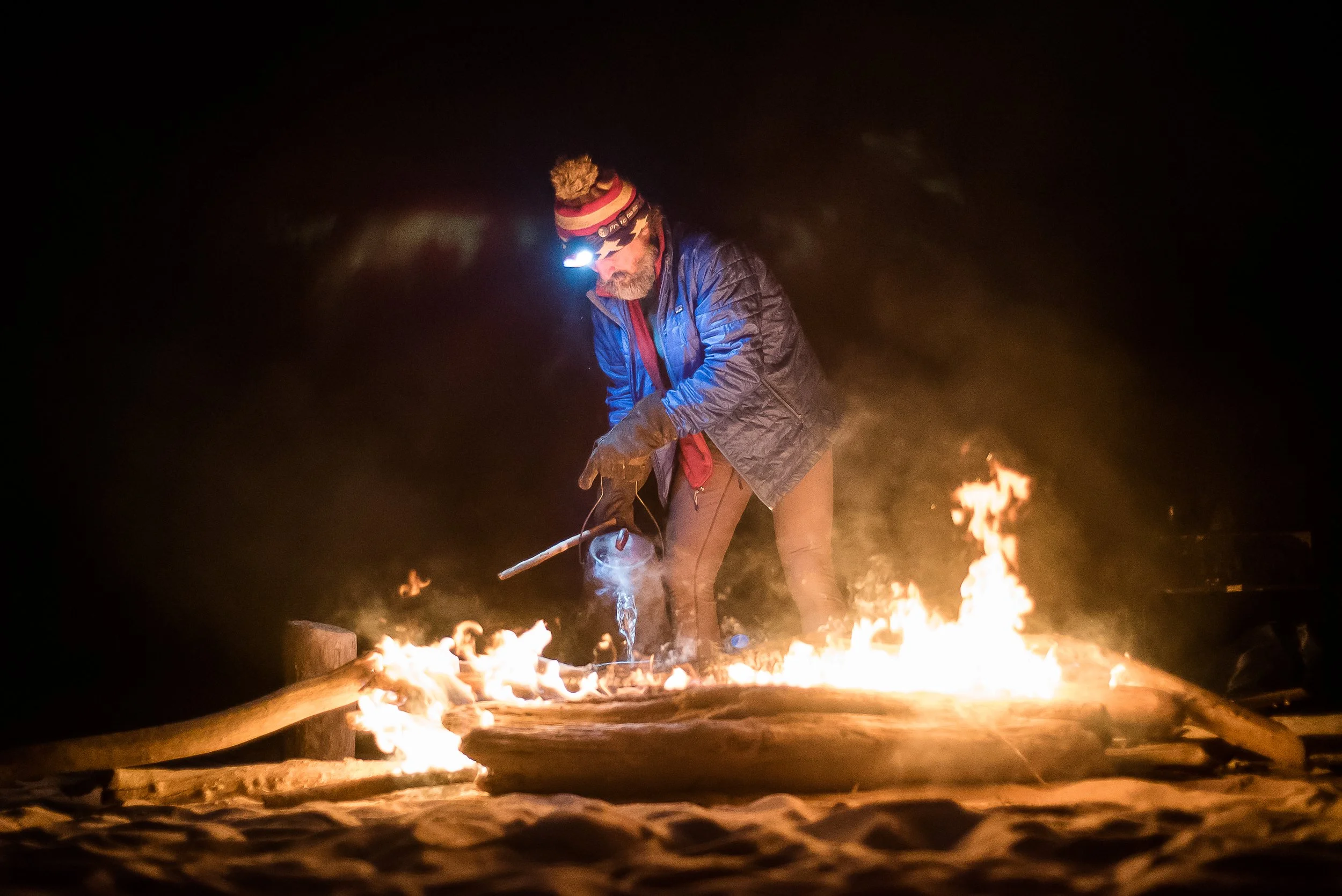🎥 Link to watch film!
Experience the Mississippi River as you never have before—from the seat of a 30-foot canoe—and rethink your understanding of one of America’s easily misunderstood and wildest places.
Somewhere just south of Greenville, MS, John Ruskey and Chris “Wolfie” Staudinger (L to R) read and write during sunrise, 2013. Photo: Chris Battaglia
About the Project
Under the leadership of Quapaw Canoe Company, and as a part of the Rivergator project, six of us set off from St. Louis, MO, and ended up in the Gulf of Mexico across two canoe trips during the spring and fall of 2017. More than 40 others hopped on and off throughout our multi-month journey, and this film is my resulting contribution to help paint a never-before-seen portrait of America’s most forgotten wild places.
About the Film
The film is intended as a modern portrait of the Mississippi River, viewed directly from the waterline, islands, levees, and riverbanks between St. Louis the Gulf of Mexico.
We follow a seven-week canoe expedition celebrating the completion of the Rivergator: a free paddler's guide to navigate the longest free-flowing river in the continental United States. Beginning in the Mississippi Delta, the film introduces John Ruskey (our present-day Mark Twain), the sage, eccentric and celebrated artist, canoe-builder, and river guide. We meet the rest of the paddlers on expedition, get to know the town of Clarksdale, Mississippi - the headquarters of the canoe company - then we begin our journey.
Through the themes of shelter, clothing, food, and fuel, the film explores life on the Mississippi, and addresses the juxtaposition of wilderness and industry. Using the story arc of the expedition to subtly guide the last half of the film, storms rage and trees fall on paddler's tents, which causes the crew to pull out of the water early, near New Orleans. Six months later, the expedition resumes at the same location, paddles through the rest of "Chemical Corridor" below Baton Rouge, to emerge in the Gulf of Mexico.
For Ruskey, the trip to the Gulf signifies the completion of one of the largest projects he's ever started. For the viewer, the film provides a visual aid to the only document (since Twain's 'Life on the Mississippi') that aids in safe recreation and navigation of the river
By the end of the film, the viewer is meant to acknowledge the Mississippi River and its history as a mirror, in order to look to the wilderness in one's own backyard to better protect it. I was the documentary filmmaker aboard the entire expedition.
CURRENTLY: Looking for additional production and post-production funding, editors, and creative producers to help re-shape the current 70-minute feature! Is that you?
River guide, artist, and leader of the 2017 expedition John Ruskey at the helm of a driftwood fire on an island on the Mississippi River, brewing his famous Cowboy Coffee. Photo: Chris Battaglia
This film was funded in part by the Lower Mississippi River Foundation and by individuals through an IndieGoGo campaign.




